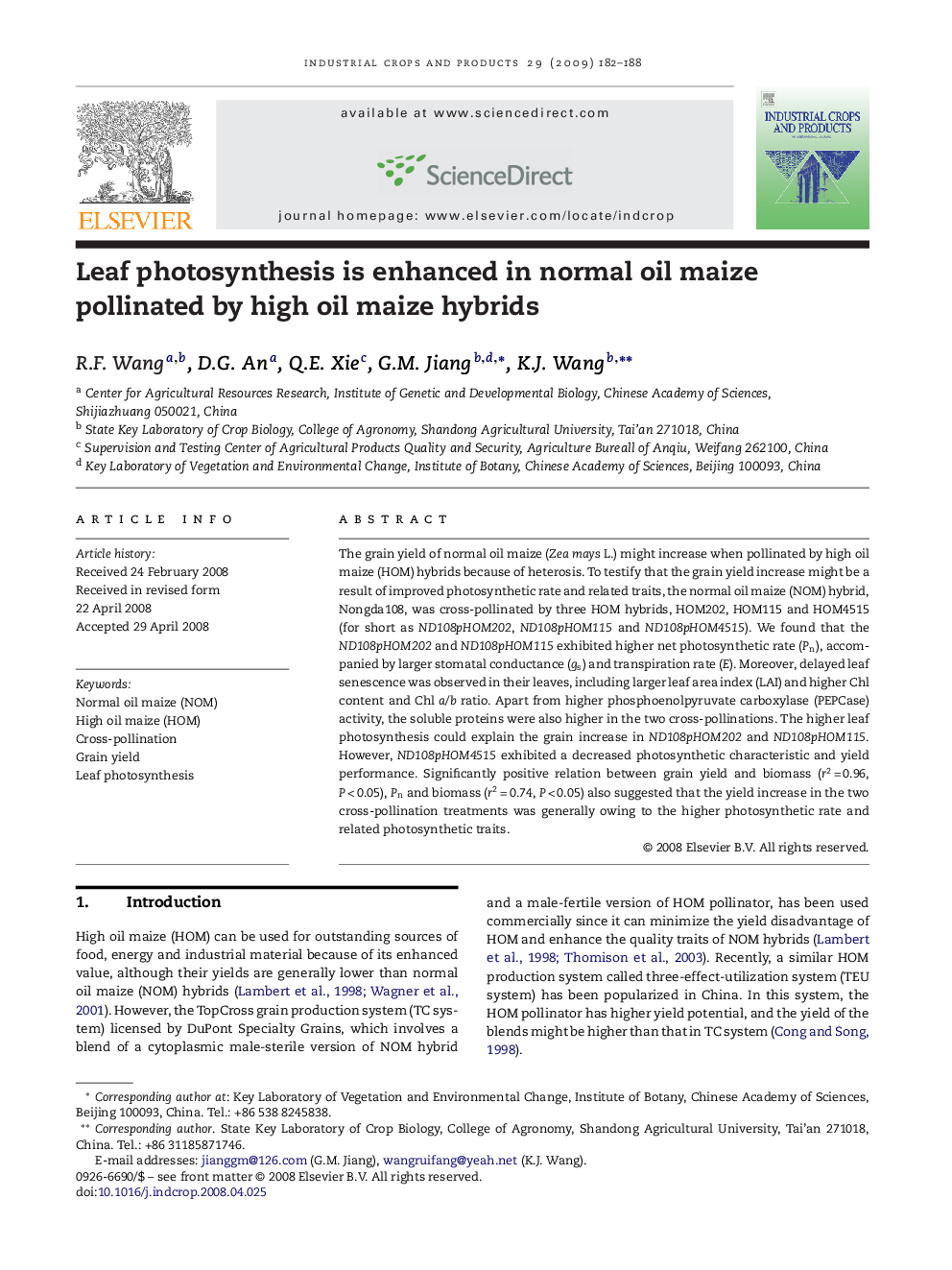| Article ID | Journal | Published Year | Pages | File Type |
|---|---|---|---|---|
| 4515183 | Industrial Crops and Products | 2009 | 7 Pages |
Abstract
The grain yield of normal oil maize (Zea mays L.) might increase when pollinated by high oil maize (HOM) hybrids because of heterosis. To testify that the grain yield increase might be a result of improved photosynthetic rate and related traits, the normal oil maize (NOM) hybrid, Nongda108, was cross-pollinated by three HOM hybrids, HOM202, HOM115 and HOM4515 (for short as ND108pHOM202, ND108pHOM115 and ND108pHOM4515). We found that the ND108pHOM202 and ND108pHOM115 exhibited higher net photosynthetic rate (Pn), accompanied by larger stomatal conductance (gs) and transpiration rate (E). Moreover, delayed leaf senescence was observed in their leaves, including larger leaf area index (LAI) and higher Chl content and Chl a/b ratio. Apart from higher phosphoenolpyruvate carboxylase (PEPCase) activity, the soluble proteins were also higher in the two cross-pollinations. The higher leaf photosynthesis could explain the grain increase in ND108pHOM202 and ND108pHOM115. However, ND108pHOM4515 exhibited a decreased photosynthetic characteristic and yield performance. Significantly positive relation between grain yield and biomass (r2Â =Â 0.96, PÂ <Â 0.05), Pn and biomass (r2Â =Â 0.74, PÂ <Â 0.05) also suggested that the yield increase in the two cross-pollination treatments was generally owing to the higher photosynthetic rate and related photosynthetic traits.
Related Topics
Life Sciences
Agricultural and Biological Sciences
Agronomy and Crop Science
Authors
R.F. Wang, D.G. An, Q.E. Xie, G.M. Jiang, K.J. Wang,
